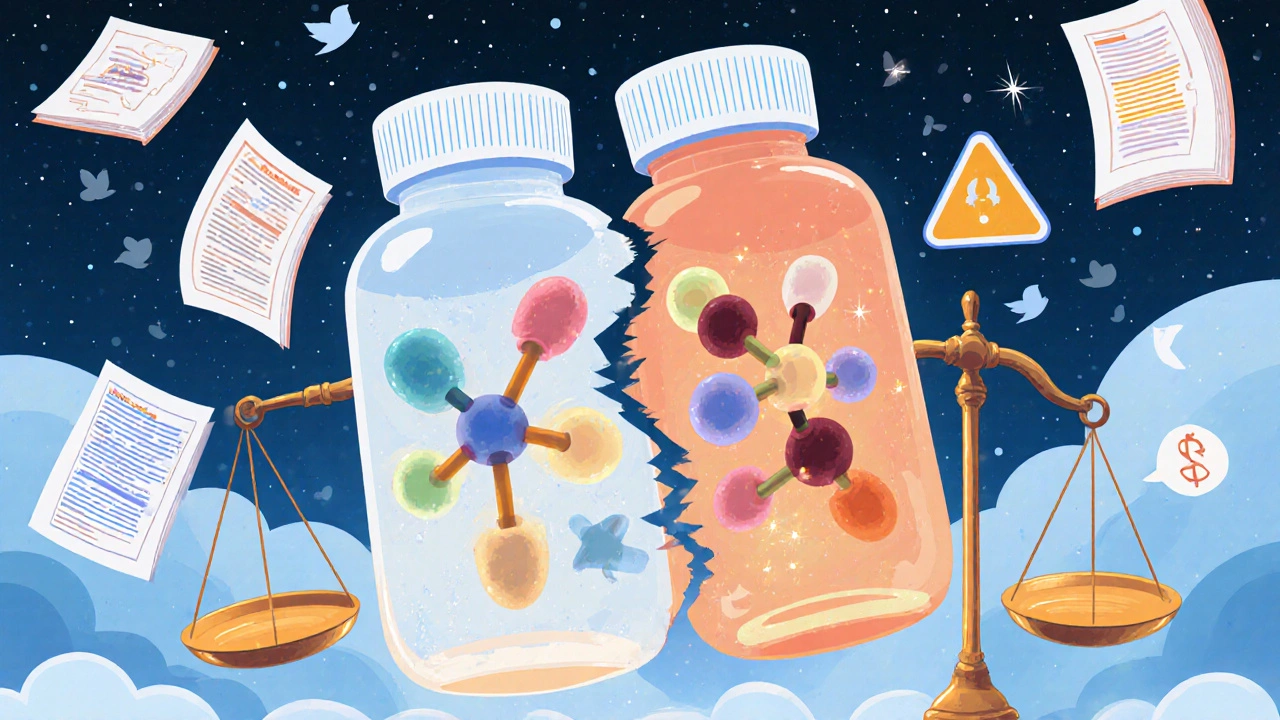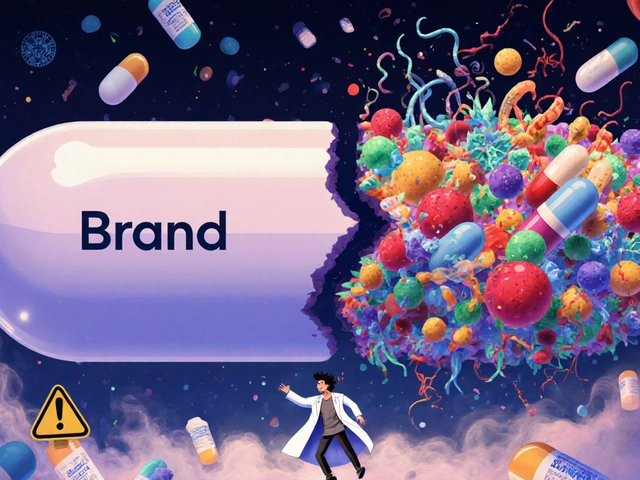When you pick up a prescription for a combination drug like amlodipine/benazepril or simvastatin/ezetimibe, you might assume all versions work the same. But that’s not always true-even when two products are labeled as "therapeutically equivalent." Managing different doses in combinations isn’t just about matching numbers on a pill bottle. It’s about understanding how active ingredients interact, how formulations affect absorption, and why two drugs with the same name can still cause problems when swapped.
What Does "Therapeutic Equivalence" Really Mean?
Therapeutic equivalence means two drug products contain the same active ingredients, in the same strength, dosage form, and route of administration-and they’re expected to work the same way in the body. The U.S. FDA tracks this in the Orange Book, a public database that rates every approved drug. Products with an "A" rating are considered interchangeable without clinical risk. Over 14,000 drugs are listed, and about 95% have an "A" rating. But here’s the catch: therapeutic equivalence doesn’t guarantee identical results in every patient. Especially with combination products, where two or more drugs are packed into one pill, small differences in inactive ingredients or manufacturing can change how the body absorbs each component. For example, one generic version of fluticasone/salmeterol might use a different filler than the brand name, and while it meets FDA standards, some patients report subtle changes in symptom control.Why Dose Equivalence Gets Complicated in Combinations
In single-drug products, dose equivalence is straightforward: 10 mg of Drug A equals 10 mg of another 10 mg version. But in combinations, each component may have a different potency. Take sirolimus and topotecan, used in cancer treatment. One reduces cell growth by 69.8%, the other by 88.9%. Simply swapping doses based on weight or volume won’t work. You need to calculate the efficacy ratio-a formula that balances how strongly each drug acts. Even in common combinations like tramadol/acetaminophen, the effect isn’t just additive. The two drugs work together in a way that creates a stronger pain relief than either would alone. That’s called synergy. If you switch from one brand to a generic with the same labeled doses, but different release profiles, you might get less pain control-or worse, side effects like dizziness or nausea.The Hidden Risk: Narrow Therapeutic Index (NTI) Drugs
Some drugs have a razor-thin line between helping and harming. These are called Narrow Therapeutic Index (NTI) drugs. Examples include warfarin, levothyroxine, and phenytoin. Even a 10% change in blood levels can lead to serious problems: blood clots, thyroid crashes, or seizures. When these drugs are part of a combination-say, levothyroxine + calcium for post-menopausal women-the risk multiplies. A 2018 study found that 12% of patients switching between "therapeutically equivalent" levothyroxine generics had abnormal thyroid levels within weeks. The FDA requires tighter bioequivalence standards for NTI drugs (90-111% instead of the usual 80-125%), but that still leaves room for variation. And in combinations, those small differences add up.
Generic Substitution: Cost Savings vs. Clinical Risk
The push for generic substitution is driven by savings. In the U.S., generics saved $1.7 trillion over the last decade. Generic versions of combination drugs like Advair Diskus cost 40% less and are rated "A" by the FDA. Many patients switch without issue. But real-world data tells a different story. A hospital pharmacist in Chicago reported saving $1.2 million annually by switching patients to generic proton pump inhibitor combos-with zero adverse events. Meanwhile, on Reddit, a pharmacist shared three dose-related errors in six months from switching between different strengths of amlodipine/benazepril. One patient got 5/20 mg instead of 10/20 mg and ended up in the ER with low blood pressure. The FDA’s Adverse Event Reporting System logged 247 incidents in 2022 tied to dose conversion errors in combination products. Nearly 40% involved heart medications. That’s not a glitch-it’s a systemic gap in how we train staff and communicate substitutions.How to Manage Combination Doses Safely
There’s no magic fix, but there are proven steps to reduce risk:- Check the Orange Book-Always verify the TE code. "A" means equivalent. "B" means unknown or unproven. Don’t assume.
- Match active ingredients exactly-Even if the brand name is the same, different manufacturers may use different salts or esters. Tetracycline hydrochloride isn’t the same as tetracycline phosphate complex, even if both are labeled "250 mg."
- Watch for NTI combinations-If the combo includes warfarin, levothyroxine, or phenytoin, avoid switching unless absolutely necessary. Monitor blood levels closely after any change.
- Use barcode scanning-Many hospitals now require scanning both the prescription and the dispensed product. This catches mismatches before they reach the patient.
- Document and monitor-After switching a combination product, check in with the patient in 72 hours. Ask about side effects, symptom changes, or new symptoms.
What’s Changing in 2025?
The FDA is rolling out new tools. In early 2023, they released draft guidance for "complex combination products"-those where dose-response isn’t linear. They’re also testing machine learning models that predict which generic substitutions might fail based on formulation differences. Early tests got 89% accuracy. Meanwhile, the push for personalized medicine is starting to influence therapeutic equivalence. By 2030, the NIH expects 30% of equivalence decisions to include pharmacogenomic data-like whether a patient metabolizes drugs slowly or quickly. That could mean two patients on the same "equivalent" combo get different doses based on their DNA. In Europe, regulators require extra testing for fixed-dose combos where components absorb differently. The U.S. may follow. For now, the system works well for most people-but it’s not foolproof.
What Patients Should Know
If you take a combination drug, don’t assume your pharmacy’s substitution is harmless. Ask:- "Is this the same brand or a generic?"
- "Has the dose changed?"
- "Are there any new side effects I should watch for?"
Frequently Asked Questions
Are all generic combination drugs truly interchangeable?
No. While the FDA assigns "A" ratings to many generics, that only means they meet minimum bioequivalence standards. Differences in inactive ingredients, release rates, or manufacturing processes can affect how the body absorbs each component-especially in narrow therapeutic index combinations. Always check the Orange Book and ask your pharmacist about the manufacturer.
Can I switch between different strengths of a combination drug?
Only if your prescriber approves it. Combination drugs are designed with specific ratios. Switching from 5/10 mg to 10/20 mg might seem like doubling, but if one component has a nonlinear effect, you could overdose one drug while underdosing the other. Never change strength without consulting your doctor.
Why do some generic versions cause side effects when the brand didn’t?
Inactive ingredients-like fillers, dyes, or coatings-can alter how quickly a drug dissolves. For example, one generic version of rivaroxaban uses croscarmellose sodium, while another uses sodium starch glycolate. In combination products, these differences can change absorption timing, leading to spikes or dips in drug levels. Patients with sensitive systems, like the elderly or those with kidney disease, are most at risk.
Is therapeutic equivalence the same as bioequivalence?
No. Bioequivalence means two drugs have similar absorption rates and levels in the blood. Therapeutic equivalence adds clinical performance: they must produce the same effect and safety profile. A drug can be bioequivalent but not therapeutically equivalent if the formulation changes how the drug works in the body-like altering the release mechanism in a combination product.
What should I do if I notice a change after switching my combination drug?
Contact your prescriber immediately. Keep a log of symptoms: changes in energy, sleep, heart rate, mood, or blood pressure. If you’re on an NTI drug, ask for a blood test to check levels. Don’t assume it’s "all in your head." Documented cases show real differences-even when the FDA says products are equivalent.




